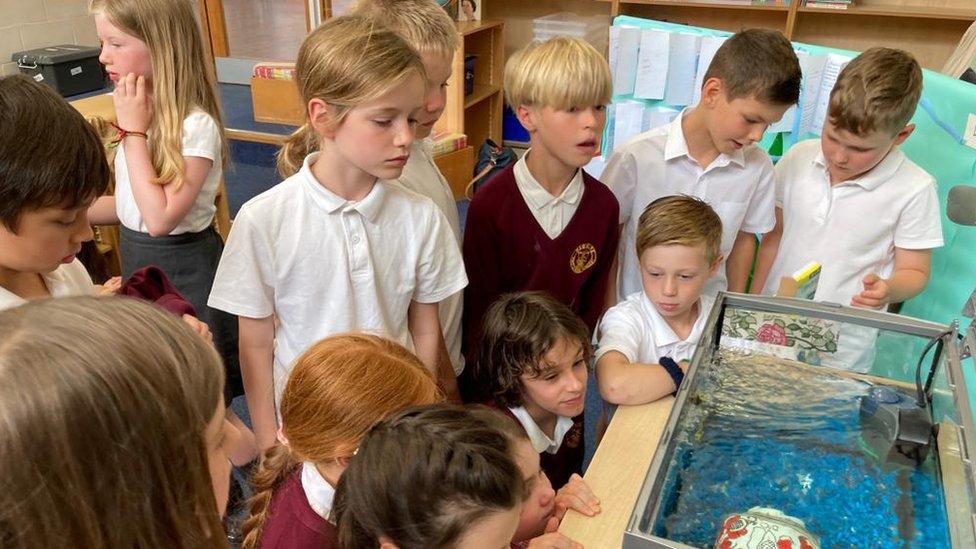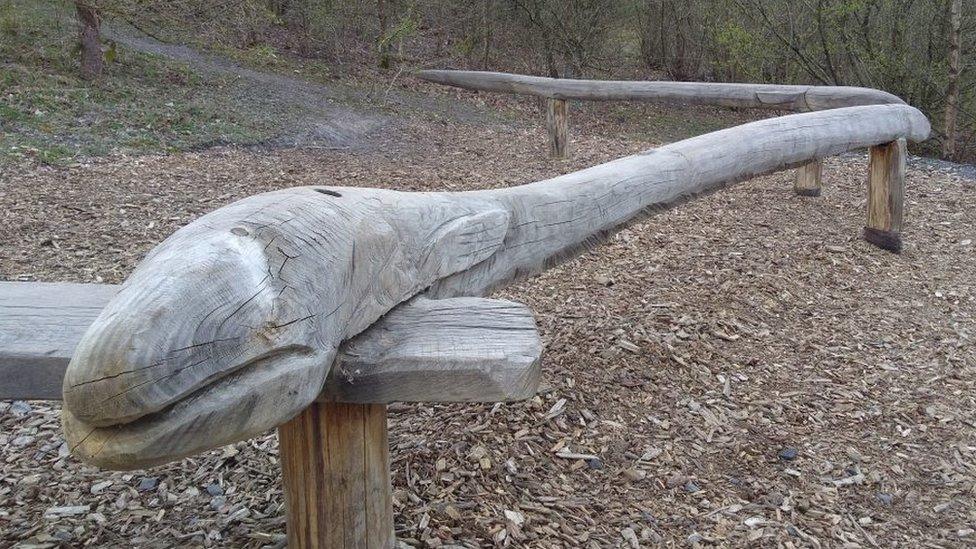Somerset Council helping to reverse decline in eel numbers
- Published

Chard Reservoir Ranger Hannah and her work placement student Katelin had the opportunity to see where the glass eels come from
A council is helping to increase the declining numbers of European Eels.
Somerset Council's countryside team at Chard Reservoir Local Nature Reserve (LNR) is working with the Environment Agency (EA) to reverse the trend.
Chard Reservoir LNR has a long history of eel habitation.
An EA survey has now confirmed its waters are a viable habitat to support and expand their numbers and distribution, with thousands of eels being released there.
European eels are critically endangered - declining by 65% in the UK and 95% worldwide since 1980.
This is due to overfishing, disease, and the blocking of waterways with dams and weirs, preventing them from completing their migration and breeding cycle.
In May this year an extra 8,000 glass eels were released into Chard reservoir.
Rich biodiversity
These will develop into juvenile eels known as elvers and, once mature, they will begin their journey to the Caribbean to spawn.
To aid this, the council's team will install eel passes on spillways of the dam to support their movement to and from the River Isle and onwards to the River Parrett, out to the Bristol Channel, and the 3,000-mile journey to the Sargasso Sea - part of the Atlantic.
Countryside manager at Somerset Council, Rachael Whaites, said: "We're delighted that Chard Reservoir is being used to help boost eel numbers.
"A greener, more sustainable Somerset is one of Somerset Council's top priorities and encouraging a rich biodiversity is part of that."
Geoff Way, spokesperson for the Environment Agency said "Chard Reservoir sits at the head of the River Isle and offers excellent habitat for young eels to grow and develop into mature adults.
"This was confirmed following a 24hr netting survey recently performed by our officers, where a sample of the resident eel population was measured and recorded, showing good numbers present."

Follow BBC West on Facebook, external, Twitter, external and Instagram, external. Send your story ideas to: bristol@bbc.co.uk , external
Related topics
- Published9 June 2023

- Published15 February 2021
